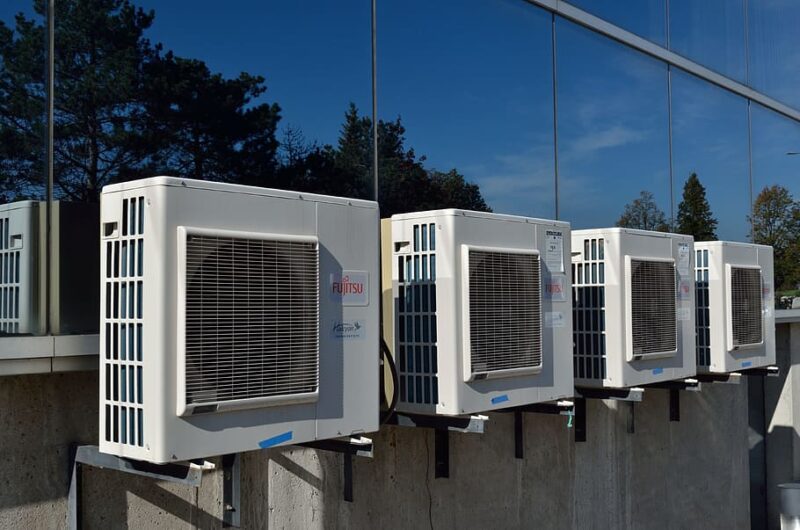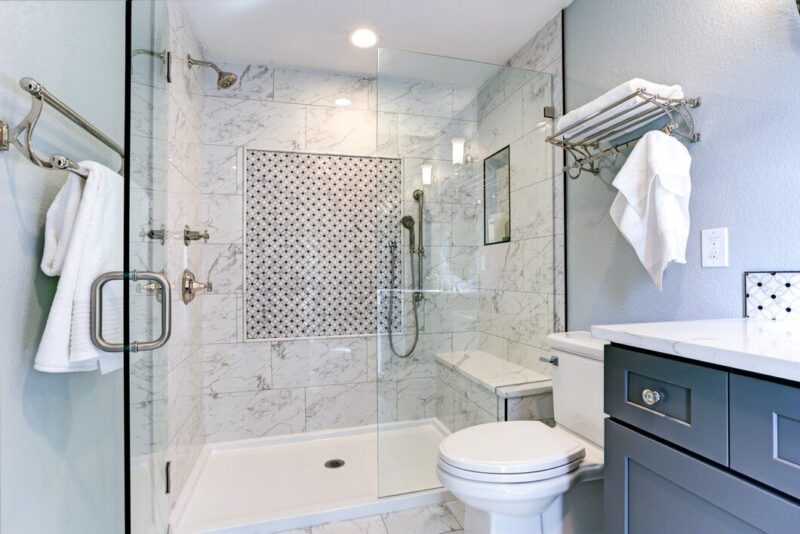There are many different types of air conditioners to choose from, and each has its own set of benefits. Some units can cool while others heat, while some models provide both functions. This article will help you decide which type is right for your home.
The how to keep top floor apartment cool in summer is a guide that will help you find the best air conditioner for your needs.
The kinds of air conditioners you select for your home are determined by a variety of variables such as the size of the house, the amount of energy used, the cooling purpose, and so on.
Two sets of metal coils and a refrigerant mixture are used in every air conditioner. The combination aids in heat transmission from one coil to the next.
Air conditioners may be either freestanding devices with both coils within one unit or split-system systems with one coil inside a unit inside the home and the other coil outside the house.
There are 13 different types of air conditioners
Now that we’ve covered the fundamentals of how they operate, let’s look at the 13 various kinds of air conditioners available. There will be one that fits your needs, whether you live in a home, an apartment, a recreational vehicle, or anything else.
Air Conditioning (Central)
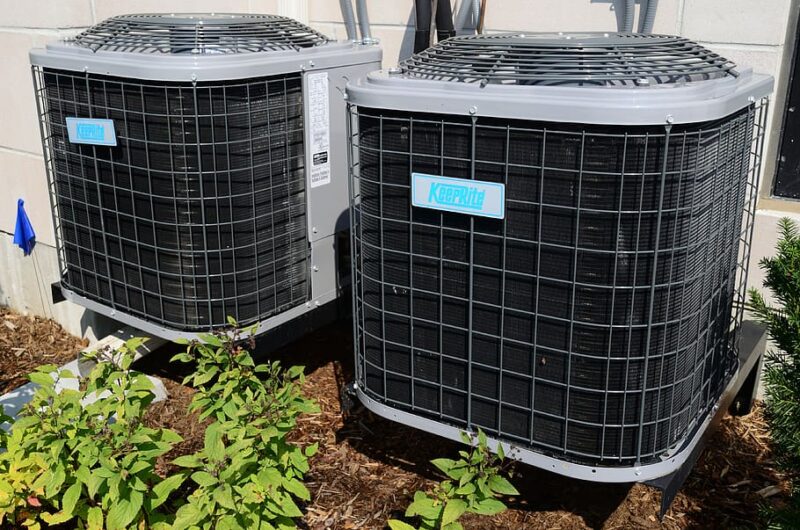
This kind of air conditioning, often known as channel air conditioners, is the most prevalent in the United States. The air is controlled via a system of ducts placed within the ceiling or walls, while the main compressor unit is situated outside the home, making it a split-system device.
Although these systems are simple to use, they may be complicated and expensive to set up. You’ll need expert assistance to install a central air conditioning system since you can’t do it alone.
Although these systems use a lot of energy, they are the most energy-efficient way to cool big areas. They also allow you to chill several areas at once. Thankfully, even the poorest apartments in the United States have central air conditioning (unless you get some tiny studio space in NY).
Mini-Split Ductless Wall Mounted
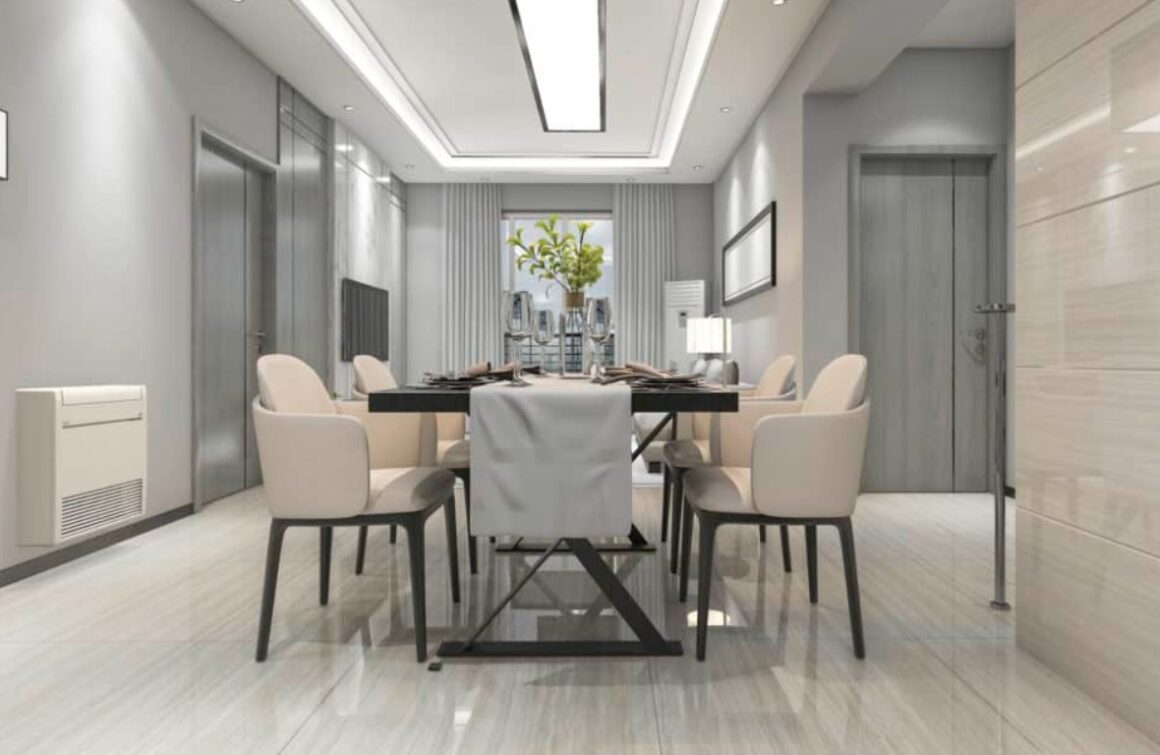
The aircon kinds are split-system air conditioners that are smaller and more compact, with two parts: an outside condenser and an interior evaporation unit.
These wall-mounted compact blower units, also known as evaporative units, are linked to the condenser through pipes rather than ducts. The system is considerably quieter than standalone units since the condenser or compressor is placed outside.
Because each unit has its own thermostat, split systems offer an advantage over centralized air conditioners in that they can chill various rooms at different temperatures.
Installing a mini-split in each room, on the other hand, may end up costing more in the long term than having central air conditioning.
Air Conditioner with a Column Mounted on the Floor
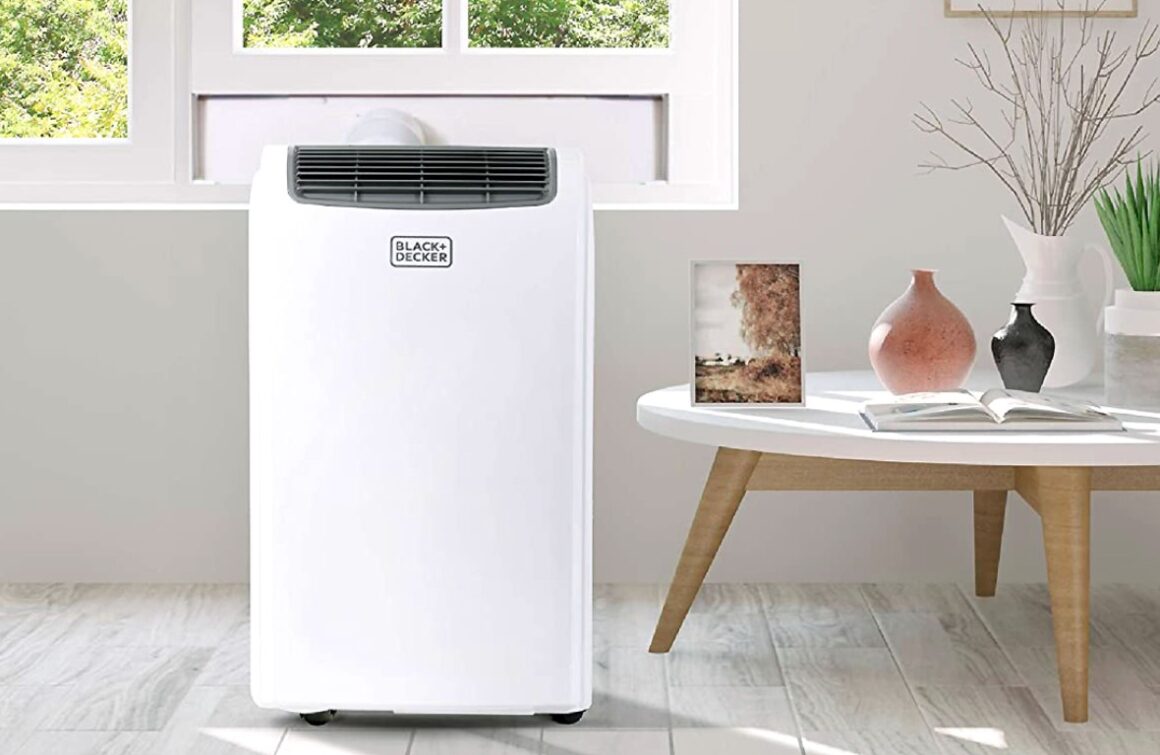
Air conditioners with a ductless split-system may be installed on both walls and floors. A high-capacity unit placed on the floor is known as a floor-mounted column air conditioner.
Because they generate a powerful outflow of air, they are frequently used to cool big spaces such as lobbies, receptions, and waiting areas. Because of the enormous volume of air cooled by these air conditioners, it’s best not to be too close to them while they’re running.
Air Conditioner in a Cabinet Mounted on the Floor
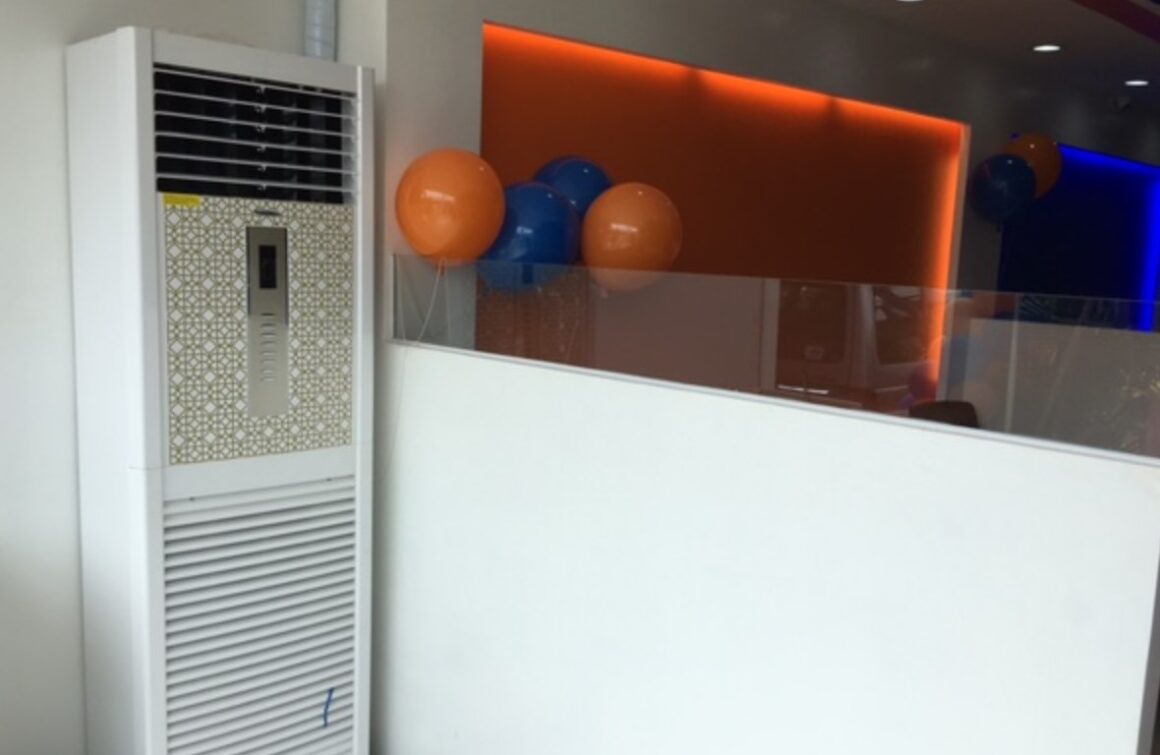
These floor-mounted devices are smaller than a kitchen cabinet and are placed on the floor. They’re perfect for keeping tiny areas cool.
However, since there is so much piping and cabling, they must be installed by refrigeration experts. Doing it yourself and doing it incorrectly may result in leaks, efficiency loss, and even electrical issues.
Air Conditioner in the Window
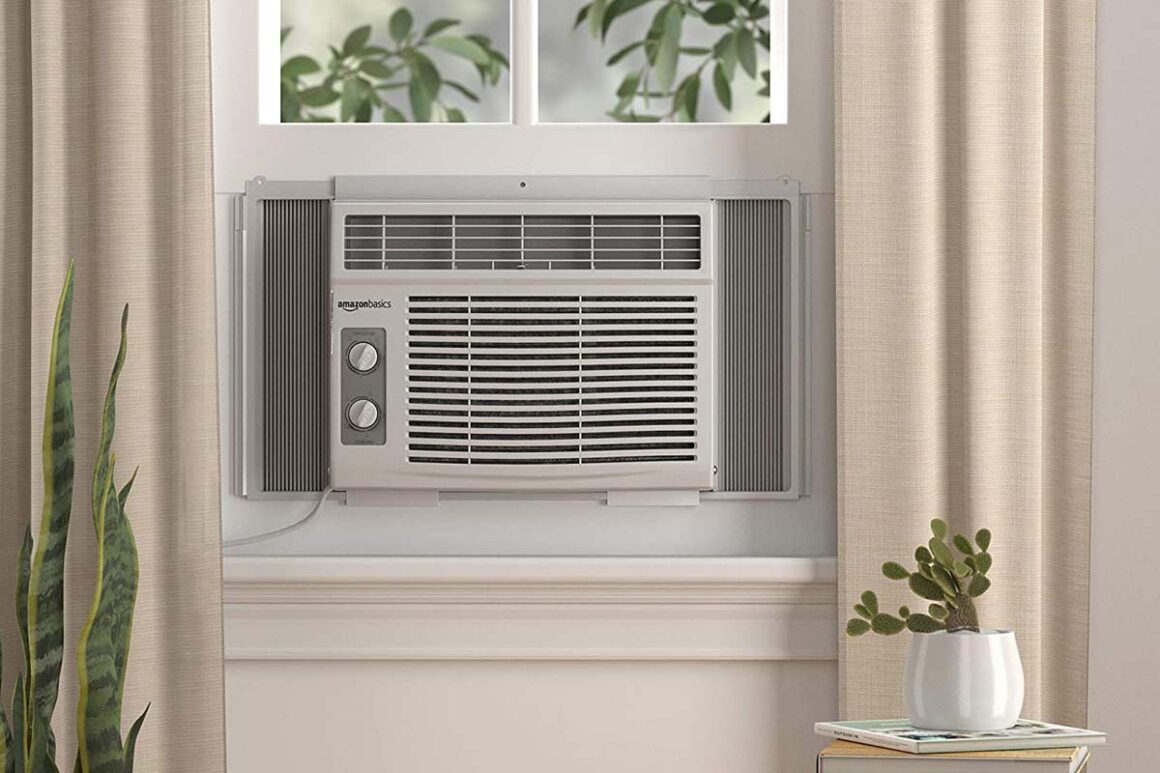
Through-the-wall air conditioners are another name for them. They are installed in an open window or a wall no thicker than 9 inches thick. Thick walls obstruct airflow and make it difficult for your air conditioner to operate effectively.
These are stand-alone air conditioners that utilize an exhaust system to pull hot air out of the room and replace it with cold air. They’re perfect for cooling single rooms and small spaces.
Although some versions come with a remote, the controls are typically on the device itself. These systems, like ceiling fans, have replaceable filters that must be cleaned on a regular basis, but they are still excellent ceiling fan replacements.
They are louder than split systems since they are a single unit. Window air conditioners have the benefits of being simple to install and more cost effective.
They’re excellent for cooling the area you’re in, but depending on the kind of blinds you have, you may not be able to lower them all the way, necessitating the use of another technique to guarantee your privacy.
Air Conditioner on Wheels
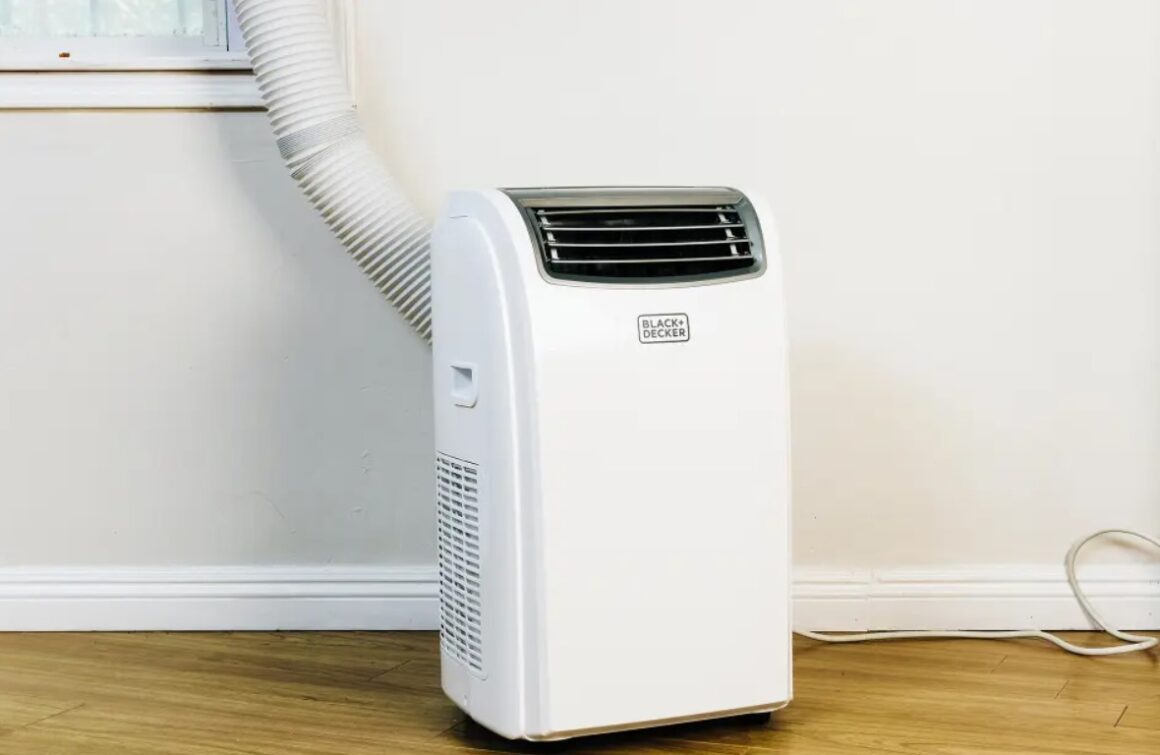
These air conditioners are also freestanding devices, similar to a window air conditioner, with all of the components contained inside one device. The distinction is that these units may be relocated from room to room; all they need is a power outlet and window access.
To evacuate the hot air from the room, these portable devices include a funnel or a flexible air pipe that can be attached to any window.
They are ideal for tiny areas like as kennels or toilets since they do not need permanent installation. They are portable and simple to transfer from one room to another since they typically have wheels.
Due to the lack of an exit, the evaporator fan must be running all of the time and must evaporate the accumulated moisture.
Air Conditioner using Hybrid Technology
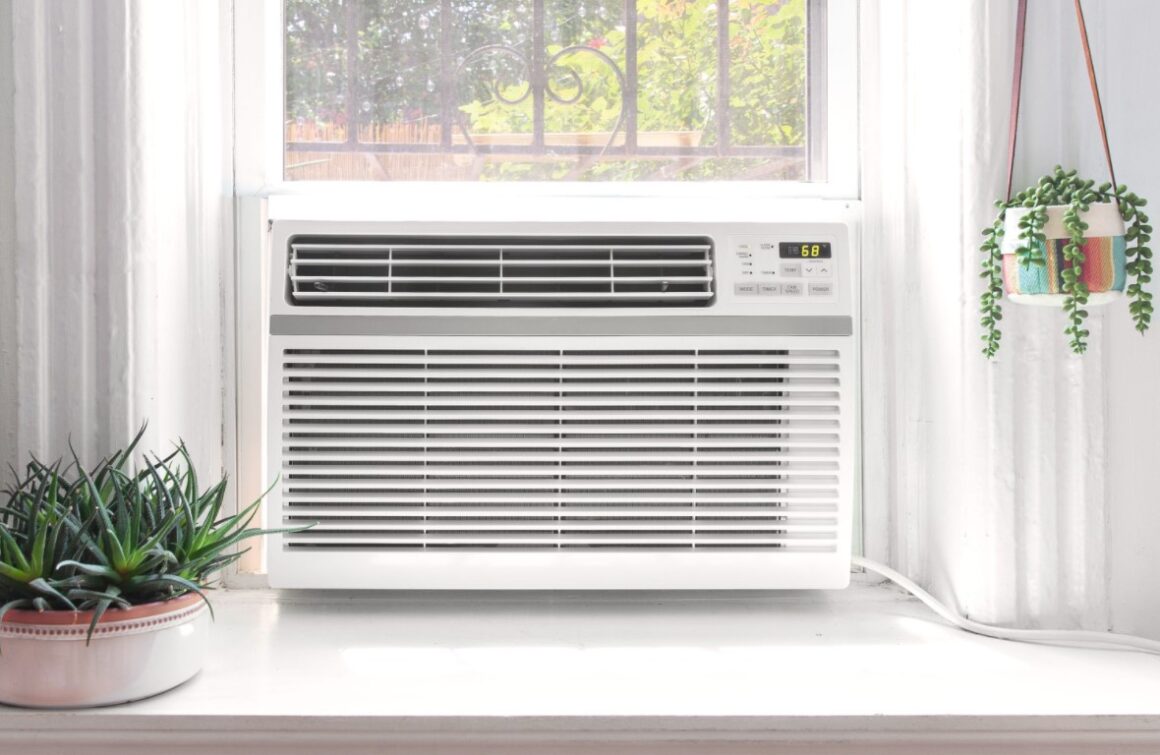
Because they include a gas furnace with an electric air-source heat pump, hybrid air conditioners are sometimes known as Dual Fuel air conditioners. Depending on the temperature outdoors, the system automatically changes between the various power sources.
Some of the newest hybrids can also transition between electrical, geothermal, and solar energy. They may be installed in a window or on a slab. They’re very adaptable.
You may either program the temperature at which the changeover must be made into the system or manually switch the sources.
The heat pump is often used to heat or cool a house. The furnace kicks in when the temperature dips too low for the pump to effectively heat the space.
Although installing a dual system is more expensive, it saves more energy and costs less in the long term. These are advanced air conditioners, although not as advanced as the ones below.
Air Conditioner with Intelligence
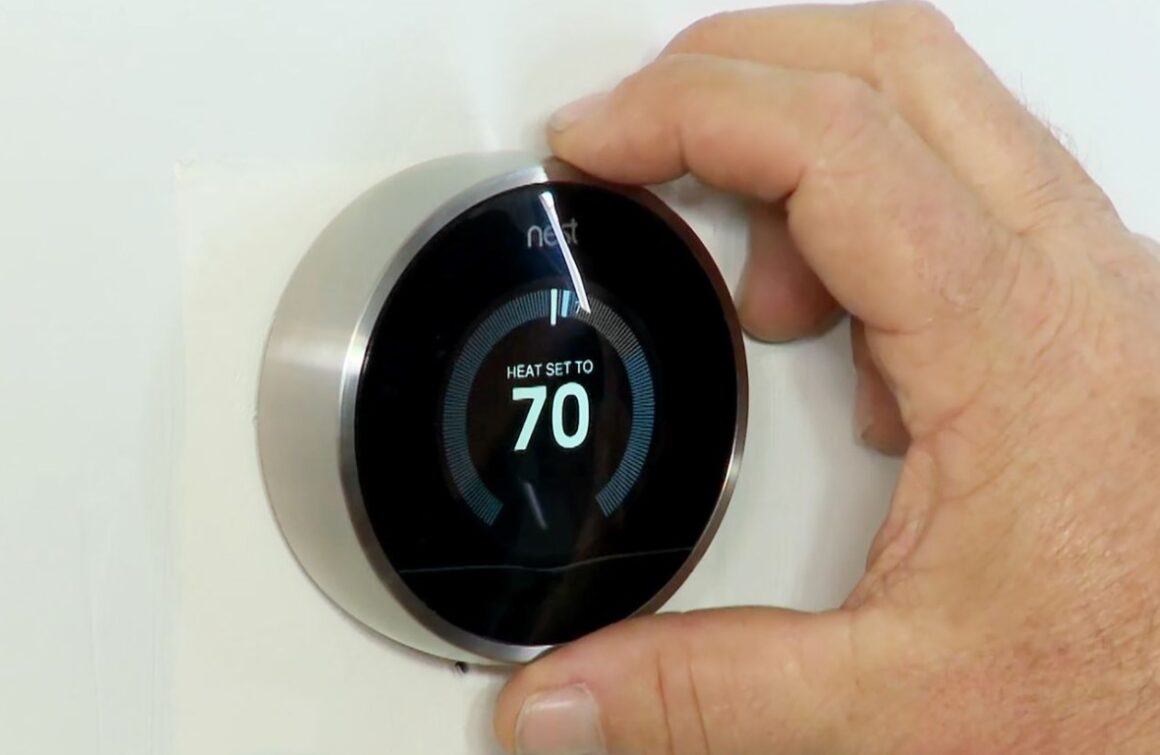
Smart air conditioners use smartphone applications to regulate household temperatures. These air conditioners are internet-connected, and their use is tracked through an app.
They’re also compatible with smart home systems and speech assistants. Such systems aid in the reduction of energy usage.
They include a number of sophisticated functions, including as automatic modes that monitor outside temperatures and regulate conditioning appropriately. You may even program your preferences to keep your house in tip-top shape.
Air Conditioner with a Cooling Spot
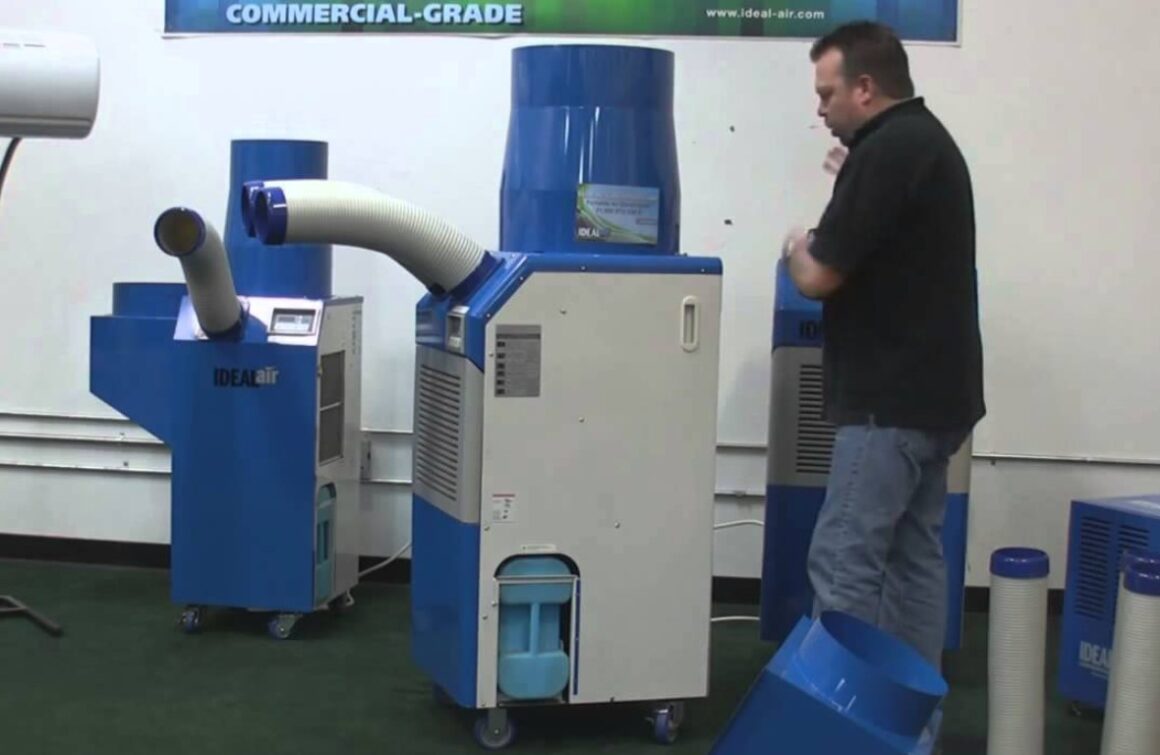
Spot coolers are large devices with a cooling capacity that is nearly industrial. They’re often utilized to keep boats, ships, and even aircraft cool.
They come as a stand-alone unit, but unlike conventional stand-alone systems, the whole device is located outside the area that needs to be cooled—two or more pipes are installed within the room to suck out warm air and circulate cold air.
While exploring various types of air conditioners to help you stay cool during hot days, it’s essential to remember the importance of proper maintenance, including regular duct cleaning. Services like www.zerorez.com/air-duct-
Geothermal Heating and Cooling
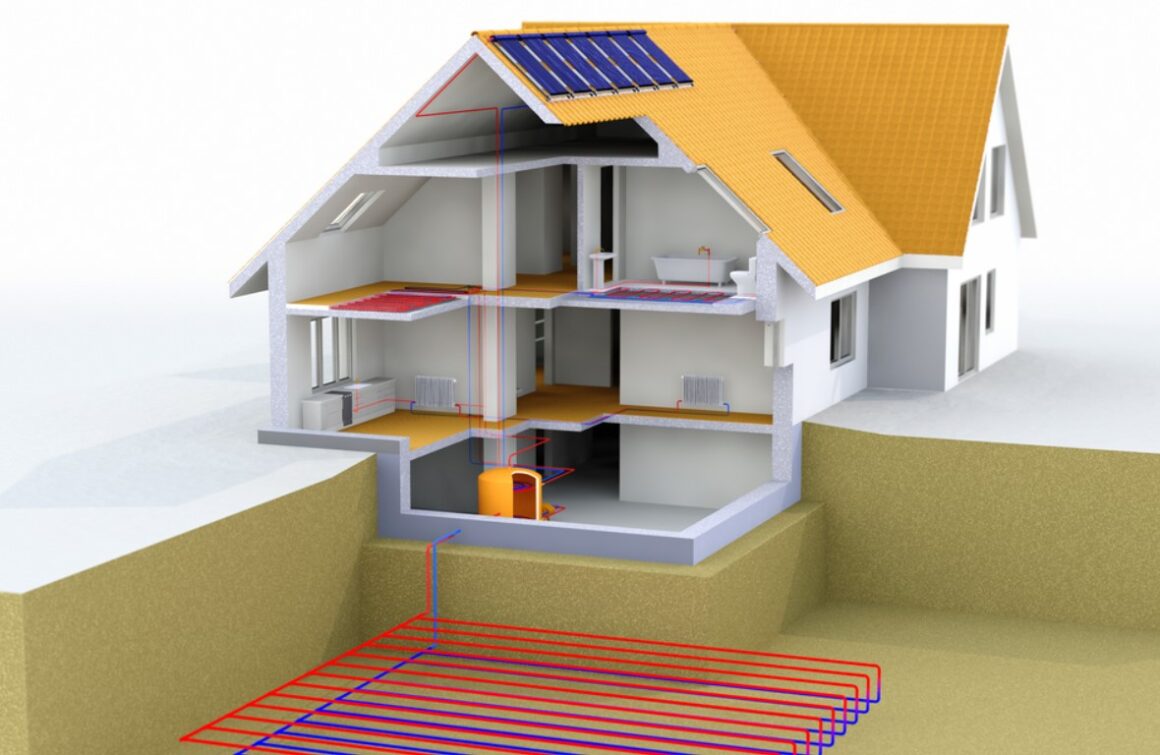
Geothermal air conditioners are one of the most recent advancements in air conditioning technology. It’s a technology that regulates the temperature of your house by using the earth’s temperature.
Despite changing weather, the temperature of the soil four to six feet below stays constant all year; this insulating characteristic is utilized to cool or heat your house depending on the weather outside.
An extensive pipe infrastructure is required for the installation of a geothermal air conditioner. This device, known as a loop or earth loop, is installed under your house and cycles water from your home to the ground and back.
Water takes heat from the ground in the winter. The ground absorbs the heat from the water in the summer. Because no fossil fuels are used to produce heat as heat is transported to and from the ground, these systems are more sustainable than other options.
Air Conditioner Swamp Cooler
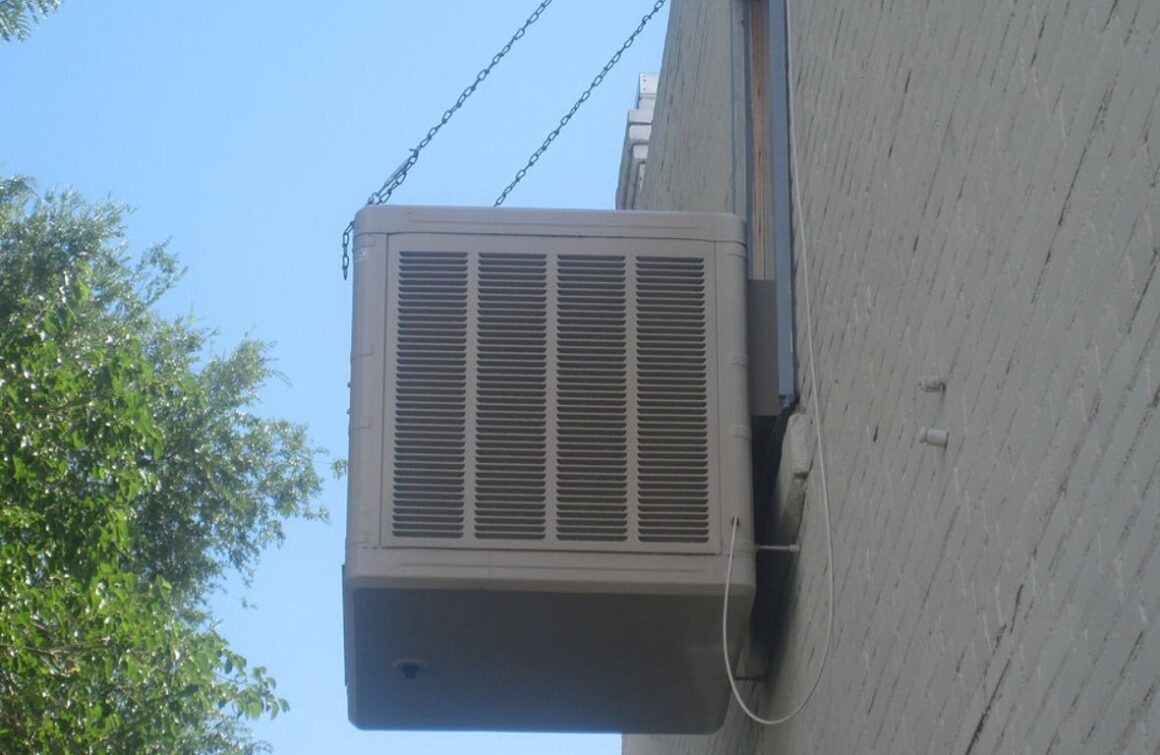
Evaporative coolers are another name for swamp coolers. These air conditioners don’t utilize refrigerants to chill the room; instead, they rely on air, water, and an evaporator fan to accomplish it.
They function best in hot, dry conditions with plenty of opportunities for evaporation. They aren’t suitable cooling devices for humid environments since these coolers also act as humidifiers, increasing humidity in existing humid environments.
Swamp coolers are a more environmentally friendly alternative to conventional cooling systems. They require less energy, have no refrigerants, and emit no carbon dioxide into the atmosphere.
Air Conditioner for Packaged Terminals
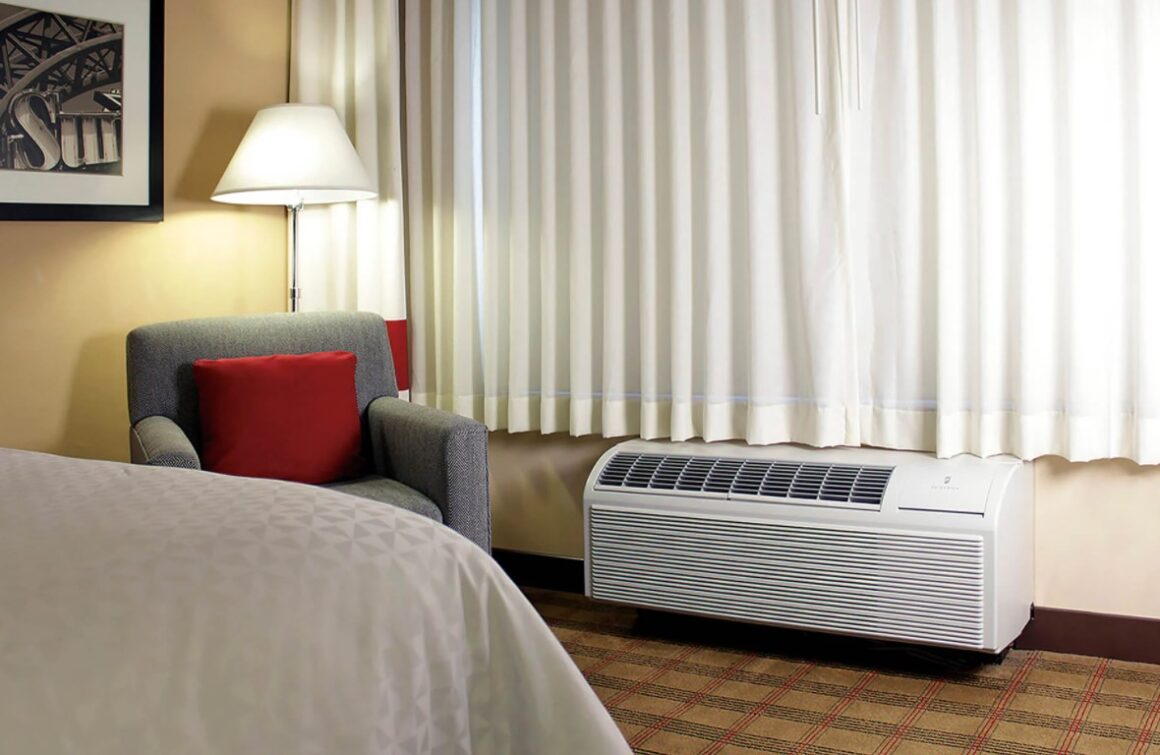
PTAC systems are frequently found in commercial areas like as hotels and hospitals, as well as in refurbished structures.
Wall-split air conditioning systems are another name for them. Unlike wall air conditioners, the PTAC features two independent units that are linked via a hole in the wall.
They’re great for keeping single rooms cool. They may, however, be utilized as a backup cooling system in a centrally air-conditioned area.
Because certain rooms may be hotter than others, a PTAC will guarantee that you don’t have to turn up the air conditioning in all of them just to chill down one.
They are typically placed in the walls, below windows and near to the floor, with the exhaust outlet facing outside. Because they are ductless, they vary from central air conditioning systems in that they are simpler to install. The majority of PTACs may also be used as heating systems.
Air Conditioner with Multiple Splits
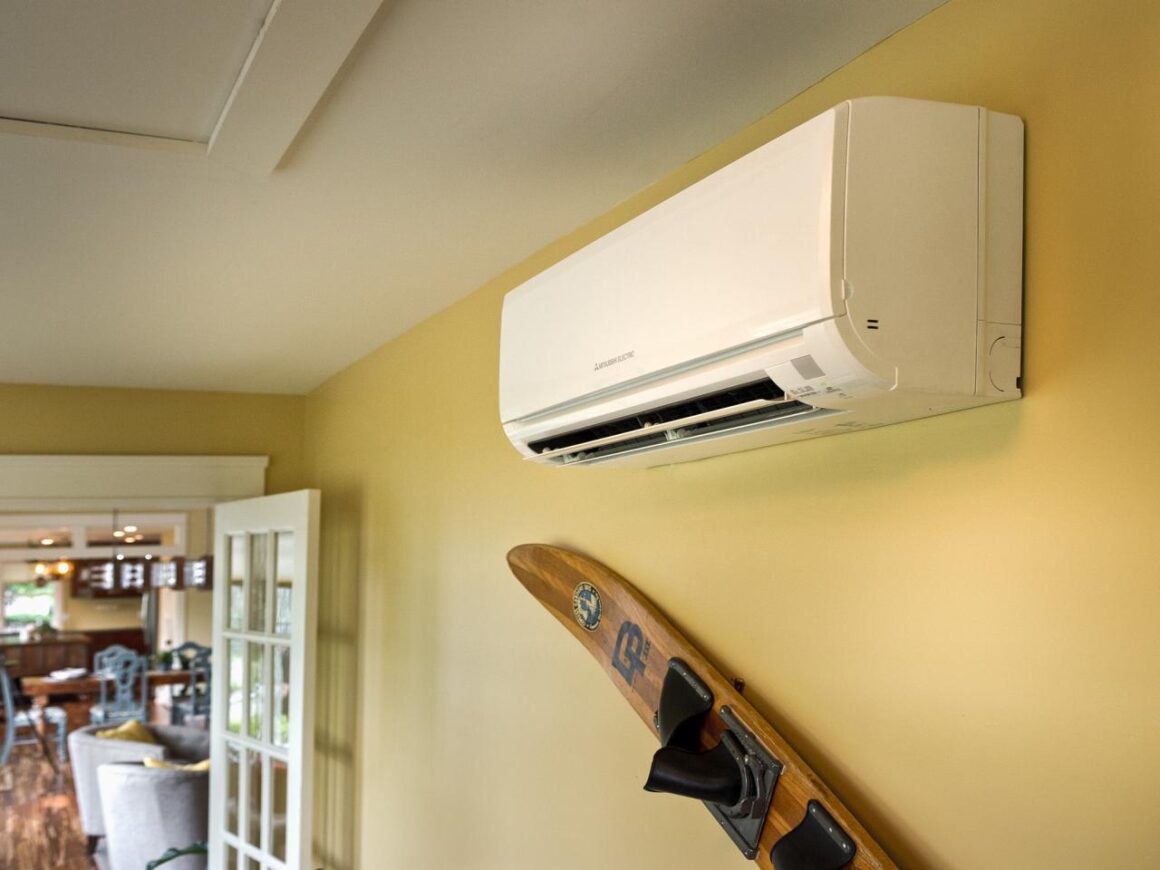
This is a split system with a single outside unit and several inside units. Although it works in the same way as a split air conditioner, one outside system may cool several rooms. Because the exterior condenser is bigger and more powerful than in conventional split systems, this is feasible.
One exterior unit may be connected to two to four inside units. Each indoor unit may be controlled independently, allowing you to customize the temperature in each area to your liking.
The major drawback of this system is that if the compressor fails, all of the interior units would fail as well.
There are many types of air conditioners for different rooms.
The total cost of utilizing different kinds of air conditioners, the amount of noise you’re prepared to put up with, and the amount of cooling capacity you need will all help you choose the best AC units for your requirements.
Frequently Asked Questions
How can I make my hot room cooler?
The best way to make your room cooler is by using a fan. This will help you cool the air in your room and keep it from getting too hot. You can also use a humidifier to add moisture into the air, which will also help lower the temperature.
What is the most an air conditioner can cool?
The most an air conditioner can cool is about 31 degrees Celsius.
